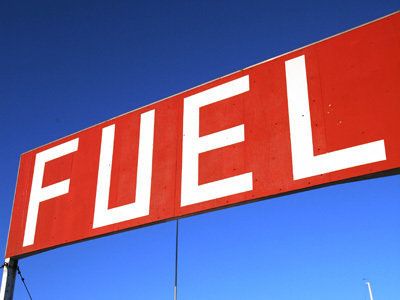
Santa Cruz, CA -- Oct. 29, 2008. Ahh, back to the good old days. You know the old days, like when you could drive with impunity 30 miles to work or 10 miles to a movie theater and the cost of gas wasn't even worth thinking about. Gasoline was as invisible as air, but just as essential to most people's life. Now that the recent bad old days of $4.50-a-gallon gas are a dim memory, everyone is breathing a sigh of relief. Things are back to normal, and all is well, right? Well, there's a reason why the USA is sometimes called the United States of Amnesia.
The current low price of gas, and its imminent skyrocketing, is an entirely predictable phenomenon. So all you oil speculators take note. In fact, I have won a lot of $100 bar bets (my version of oil futures trading) predicting the price of gas based on this immutable law of economics. Oh no, I am not talking about laws of supply and demand that act like economic gravity in regulating the price of gas. I'm talking about the fact that the world price of oil is totally dependent every two years on the federal elections in the United States.
I spotted a pattern some years ago in analyzing oil price data. There was an oil spike in the late winter/early spring of some years and not in others. It was puzzling, since demand for transportation fuel during summer driving months is understandable, but what was happening in the unremarkable winters to make gasoline prices spike? The plot thickened as I realized there was a pair of events for each spike. The fall preceding a spike the price would drop far more than the average year. So now I was really intrigued, since I am not a Coincidence Theorist.
It turns out that prior to each federal election in the US, the price of oil plummets leading up to the vote and then immediately climbs back up to lofty heights by about March 1st or so. You can go back through the data many elections and find the same pattern.
In 2006, the phenomenon became so extreme that people began to half figure it out. In a fall Zogby poll, 42% of Americans thought that the September-October cratering of oil prices had to do with election politics. Maybe the fact that we had the Oil Patch twins in the White House, a Secretary of State with an oil tanker named after her, and were obviously conducting Operation Iraqi Liberation (you spell it out) tipped folks off.
The climb in price of oil started literally on November 8, 2006, the day after the election, and rose to a level as high as the previous summer by March 2007. Why does this happen? The party in power cannot tolerate being blamed for Not Doing Something about MegaOilron predators emptying voters' wallets on their watch. Incumbents want to avoid blame for high oil prices and are willing to grant concessions and deals to Big Oil in return for temporary price drops. Big Oil has figured out how far in advance they need to start ratcheting down prices before an election to put the electorate to sleep and not place blame where its due. You didn't think oil companies actually donated their own money to buy politicians did you? They ultimately donate your money, which they extract from drivers each year after an election while politicians conveniently do nothing to stop them.
Oh, there will be a lot of handwringing, and the American Petroleum Institute will come up with 20 different press releases blaming the increase on things like a cold winter, a refinery explosion, OPEC, and, of course, their perennial favorite, the ethanol industry. But don't get fooled again. And while you're at it, make a few bucks off the amnesiacs who will bet against your predicting when oil prices go back up.
If we are to do something about this blatant gaming of the public, we need to have some real competition in the marketplace of fuels. The only real contender to keep MegaOilron honest is ethanol fuel. With a thriving farmer-owned ethanol production infrastructure in the US, people would have the power to keep price gougers in line by going to the less expensive and better -- behaved industry. It sure works in Brazil, where close to 85% of the vehicles are either flexible fuel or dedicated alcohol vehicles. Since virtually any car can run on 50% alcohol -- or for a few hundred dollars can be converted to a flexible fuel vehicle able to run on any mixture of alcohol or gas--competition from ethanol would effectively reduce price volatility and reduce the political purchasing power of Big Oil.
David Blume is CEO of the International Institute for Ecological Agriculture and author of the "grassroots manual" Alcohol Can Be a Gas! Fueling an Ethanol Revolution for the 21st Century.
Additional information available at www.alcoholcanbeagas.com